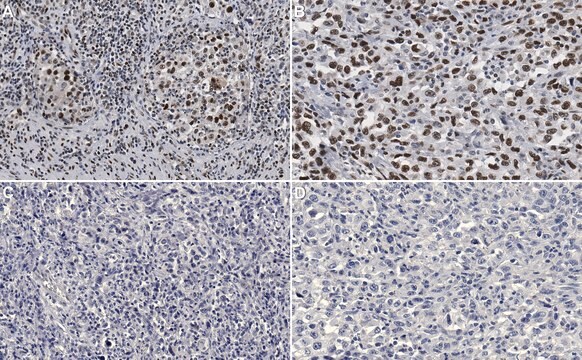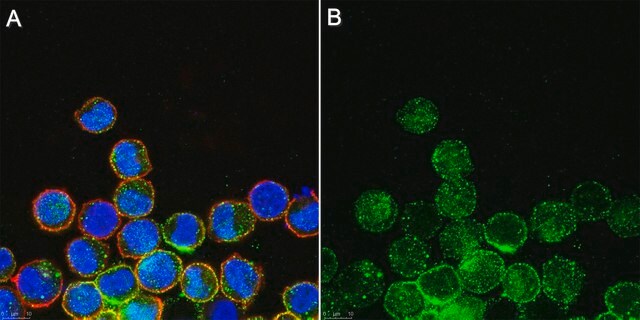06-519
Anti-phospho-CREB (Ser133) Antibody
Upstate®, from rabbit
Synonym(s):
active transcription factor CREB, cAMP responsive element binding protein 1, cAMP-response element-binding protein-1, transactivator protein
About This Item
Recommended Products
biological source
rabbit
Quality Level
antibody form
purified immunoglobulin
antibody product type
primary antibodies
clone
polyclonal
species reactivity
mouse, rat, hamster, human
manufacturer/tradename
Upstate®
technique(s)
electrophoretic mobility shift assay: suitable
immunohistochemistry (formalin-fixed, paraffin-embedded sections): suitable
immunoprecipitation (IP): suitable
western blot: suitable
isotype
IgG
NCBI accession no.
UniProt accession no.
shipped in
wet ice
target post-translational modification
phosphorylation (pSer133)
Gene Information
human ... CREB1(1385)
General description
Specificity
Immunogen
Application
10 μL of a previous lot immunoprecipitated phosphorylated CREB from 500 μg of cells treated with 50 μM forskolin.
Immunohistochemistry:
A 1:1000 dilution of previous lots detected phosphorylated CREB in formalin-fixed paraffin-embedded normal and ischemic rat brain sections.
Gel Shift (EMSA):
This antibody has been shown to gel shift by independent labs.
Signaling
Nuclear Receptors
Quality
Western Blot Analysis: This antibody detected CREB when phosphorylated on Ser133 at 1:1,000 dilution in forskolin treated NIH/3T3 lysates via SDS-PAGE and transferred to PVDF (Immobilon-P).
Target description
Physical form
Storage and Stability
Handling Recommendations:
Upon receipt, and prior to removing the cap, centrifuge the vial and gently mix the solution. Aliquot into microcentrifuge tubes and store at -20°C.
Avoid repeated freeze/thaw cycles, which may damage IgG and affect product performance.
Analysis Note
Forskolin-stimulated WI-38 nuclear extracts.
Other Notes
Legal Information
Disclaimer
Not finding the right product?
Try our Product Selector Tool.
recommended
Storage Class Code
12 - Non Combustible Liquids
WGK
WGK 1
Flash Point(F)
Not applicable
Flash Point(C)
Not applicable
Certificates of Analysis (COA)
Search for Certificates of Analysis (COA) by entering the products Lot/Batch Number. Lot and Batch Numbers can be found on a product’s label following the words ‘Lot’ or ‘Batch’.
Already Own This Product?
Find documentation for the products that you have recently purchased in the Document Library.
Our team of scientists has experience in all areas of research including Life Science, Material Science, Chemical Synthesis, Chromatography, Analytical and many others.
Contact Technical Service








